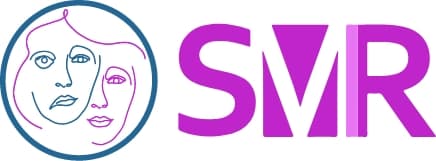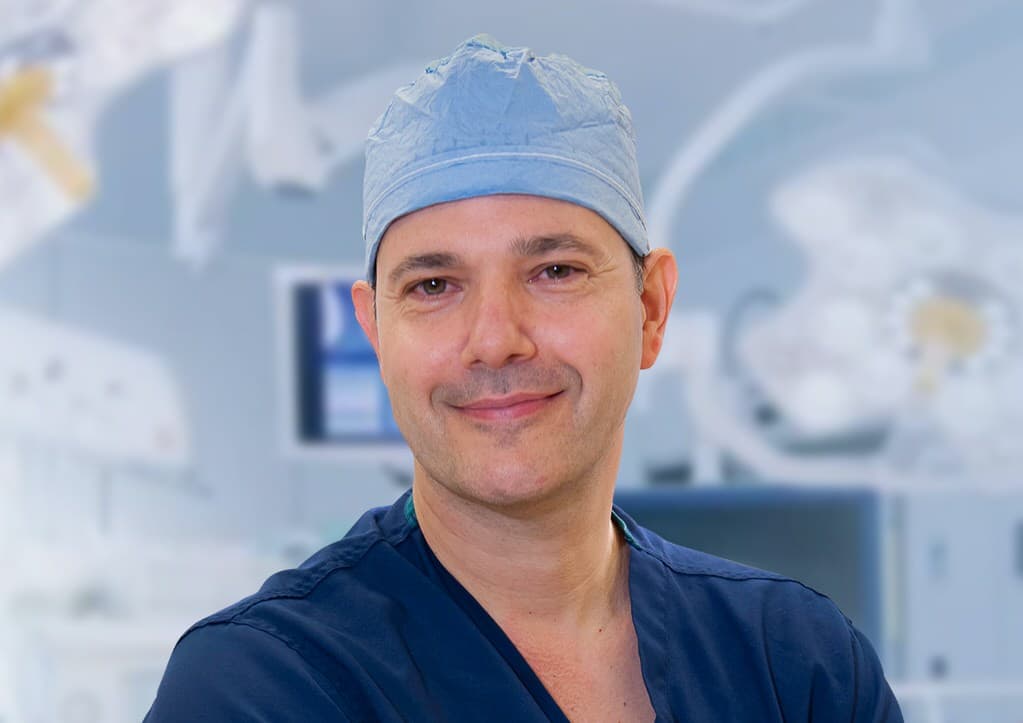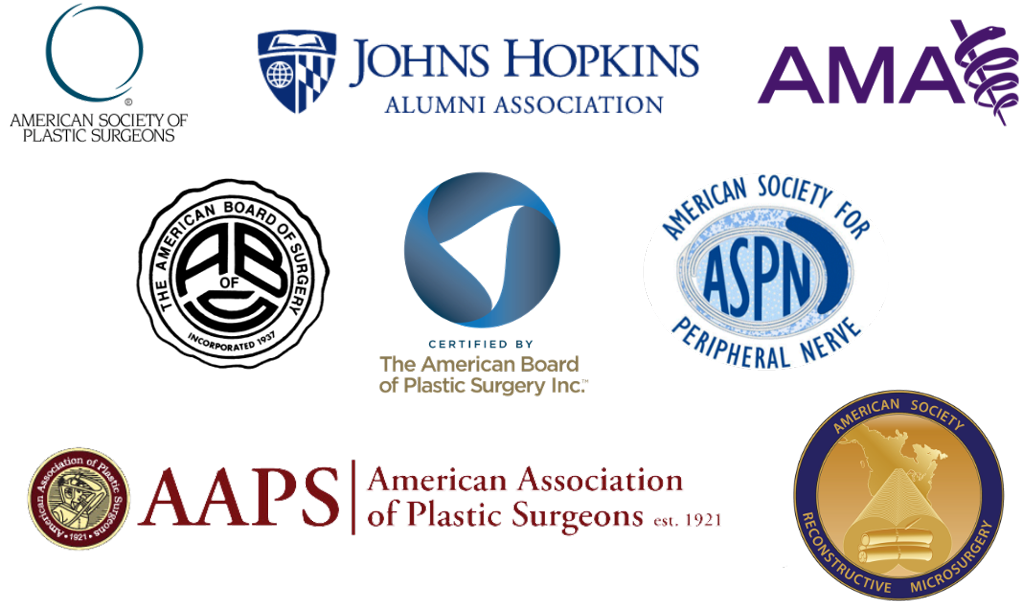Shai M. Rozen, M.D., F.A.C.S.
1801 Inwood Road
Dallas, TX 75390
Phone: (214) 645-2353
Monday–Friday: 8 a.m.–5 p.m.
Lower Lip Asymmetry
Symmetry of the lower lip is an important component of facial asymmetry treatment for facial paralysis. Initially, both patients and surgeons often don’t pay attention to lower lip asymmetry since other parts of the face will frequently take priority. Once the upper face is improved, the lower lip becomes more the center of attention. Obtaining lower lip symmetry is important when the face is at rest, but even more so when speaking or when smiling broadly and exposing the lower teeth.
Board-certified plastic surgeon Dr. Shai Rozen is a leader in the field of facial paralysis surgery at the University of Texas Southwestern Medical Center. He has helped many adults and children in restoring a more balanced and natural-looking smile using leading-edge techniques for correction of facial asymmetry.
What causes lower lip asymmetry?
The lower lip is controlled by several muscles that each affect it differently, pulling it in slightly different directions. Regardless of the degree of recovery from facial paralysis, the lower lip is nearly always left with some asymmetry. The total degree of lower lip asymmetry depends on the degree of injury and the muscles involved.
How do you fix lower lip asymmetry?
The location within the lower lip and degree of asymmetry will dictate the treatment strategy. Treatments may involve:
- Weakening the normal side
- Trying to re-innervate some of the weak or paralyzed muscles
- Introducing a new muscle to take the place of the injured muscle
Below are several approaches to obtain improved lower lip symmetry.
Dr. Shai Rozen
Dr. Rozen is a board-certified plastic surgeon who co-created a facial paralysis specialty group with colleagues from otolaryngology & neurosurgery at the University of Texas Southwestern Medical Center.
Meet Dr. Rozen
Weakening the Normal (Uninjured) Side
If significant asymmetry of the lower lip exists, often the best approach is to weaken the normal side, especially if the patient has had long-standing facial paralysis. It sounds counterintuitive to weaken the healthy side, especially considering we are nearly always striving to develop and apply strategies to improve the function of the weak side. However, this approach is very effective, straightforward, and provides satisfaction to the great majority of patients.
What are the principles of weakening the normal side?
The basic principles of weakening the normal side involve small and very selective myectomies, which involve cutting very specific small muscles that pull the lip down. This can improve the symmetry of the mouth and lower lip at rest and also during animation. This is especially important when it becomes more evident, such as while talking or during a big smile that exposes the lower teeth more on one side versus the others.
What does the surgery entail?
Surgery is performed in an outpatient setting, meaning patients go home the same day. It involves an incision inside the mouth that heals quickly. Dr. Rozen uses absorbable sutures that do not need to be removed later. The patient is provided mouthwash and antibiotics after surgery and advised on a soft diet for a week after surgery.
Is there a way to anticipate or emulate the effect of surgery before actually proceeding to surgery?
A very effective way to emulate and anticipate the results of the surgery is through targeted muscle blocks in clinic. After the block or blocks are performed, Dr. Rozen meets with the patient after 15 to 20 minutes to evaluate the results. This allows him to see whether the patient notices a difference, likes the result, and understands the possible difference in results from surgery. Overall, the effect of surgery is even better and more accurate than the muscle block, as demonstrated by research published by Dr. Rozen in 2020 and 2021 on the subject.
Since surgery is inside the mouth, are there any special dietary instructions during recovery?
The recovery time after lower lip myectomy is relatively short. After 1 to 2 weeks, the sutures are absorbed, and patients can resume a regular diet. The types of food we recommend not eating in the first couple of weeks are crackers, chips, and similar foods, which may open the incision, though unlikely; otherwise, patients may have a normal diet and gently rinse the mouth after each meal.
What should I expect during recovery?
Swelling of the lower lip is common and usually subsides in 2 to 3 weeks. Some patients will experience some hardening and temporary numbness in the area of the lower lip after surgery, but this nearly always subsides after several months. We encourage massaging the area after 2 weeks, once the incision is healed.
What type of results should I expect after myectomy surgery of the lower lip?
Most patients experience improved lower lip symmetry and improved harmony in their faces. At rest, although the changes are small, they are perceptible; most patients and even more so people around the patient will notice the difference. When speaking and during big smiles, especially spontaneous, emotional, and unplanned smiles, the symmetry is improved and the strong asymmetric pull to the healthy side is lessened.
A Valuable Resource for Those Affected by Facial Paralysis
If you, a loved one, or a patient is affected by facial paralysis, it’s crucial to have accurate, up-to-date information about symptoms and solutions. Board-certified plastic surgeon Dr. Shai Rozen, a specialist in facial paralysis and facial aesthetics, created Your Guide to Facial Paralysis & Bell’s Palsy to be a readily accessible resource for all.
This downloadable, printable e-book makes it easy to understand:
- How paralysis affects the face
- When it’s time to see a specialist
- Common causes of facial paralysis
- The difference between facial paralysis and Bell’s palsy
- Myths and facts
- The latest treatment options
- Answers to common questions
Get your free copy today—to download or view in your web browser—by completing the following fields:

Strengthening the Weak Lower Lip
Strengthening the lower lip is another option. Several approaches have been described, and some have been developed by Dr. Rozen’s group, but still, consistent and reproducible results are elusive. For information about the different considerations and approaches, contact Dr. Rozen for an in-depth discussion. The results vary, and perhaps the most important factor dictating the results is the degree of, duration of, and reason for the paralysis.
What are the different approaches to reanimate the weaker lower lip?
When the nerves to the lower lip are deliberately cut, such as during surgery for cancer, the best approach is to insert a nerve graft between the cut edges. This procedure provides the best results and chances for recovery. Recovery may take up to a year, and factors such as age, chemotherapy, or radiation might affect the results.
In these situations, if only the nerve ending entering the muscle is available, Dr. Rozen can sometimes perform either a nerve transfer from an uninjured nerve on the same side or cross facial nerve graft from the healthy side.
If nerves to the lower lip are injured during an elective surgery (such as a facelift), it is important to assess the type and location of the injury. If the nerve is suspected to have been cut, reconnecting it is the best approach. If it was burned or the location of the injury is not known, other approaches can be used, but an in-depth conversation with an expert in facial nerve surgery is recommended.
What can be done for long-standing lower lip paralysis?
If the lower lip paralysis is long standing, there are several possible avenues that might be available to replicate the lower lip pull. But again, these techniques have not been demonstrated to provide consistent results. One of those options is to transfer another muscle into the lower lip area of the paralyzed muscle so it may emulate the function of the lower lip. Such muscle transfers include the depressor anguli oris muscle or digastric muscle under the jaw. These options should be discussed with Dr. Rozen.
Next Steps
For more information about improving lower lip symmetry after facial palsy, request a consultation to meet with Dr. Rozen at UT Southwestern.










